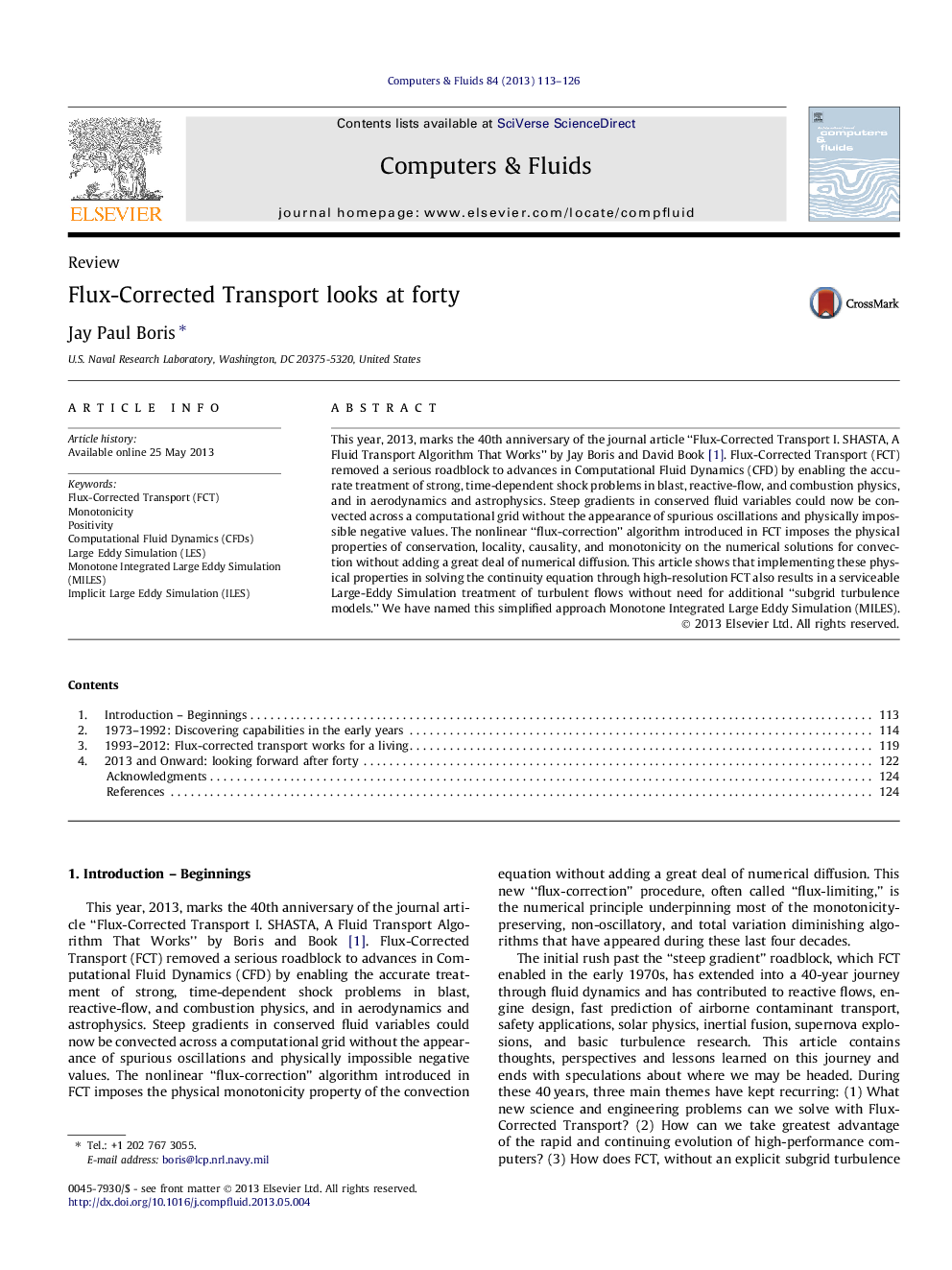| Article ID | Journal | Published Year | Pages | File Type |
|---|---|---|---|---|
| 768646 | Computers & Fluids | 2013 | 14 Pages |
•A 40-year retrospective on Flux-Corrected Transport (FCT) is given.•FCT captures the physics of convection; formal mathematical accuracy is secondary.•Evolution of FCT is related to the rapid evolution of high-performance computers.•Real-world applications and their validation shaped the development of FCT.•Monotone Integrated Large Eddy Simulation, FCT’s turbulence, “model” is explained.
This year, 2013, marks the 40th anniversary of the journal article “Flux-Corrected Transport I. SHASTA, A Fluid Transport Algorithm That Works” by Jay Boris and David Book [1]. Flux-Corrected Transport (FCT) removed a serious roadblock to advances in Computational Fluid Dynamics (CFD) by enabling the accurate treatment of strong, time-dependent shock problems in blast, reactive-flow, and combustion physics, and in aerodynamics and astrophysics. Steep gradients in conserved fluid variables could now be convected across a computational grid without the appearance of spurious oscillations and physically impossible negative values. The nonlinear “flux-correction” algorithm introduced in FCT imposes the physical properties of conservation, locality, causality, and monotonicity on the numerical solutions for convection without adding a great deal of numerical diffusion. This article shows that implementing these physical properties in solving the continuity equation through high-resolution FCT also results in a serviceable Large-Eddy Simulation treatment of turbulent flows without need for additional “subgrid turbulence models.” We have named this simplified approach Monotone Integrated Large Eddy Simulation (MILES).
